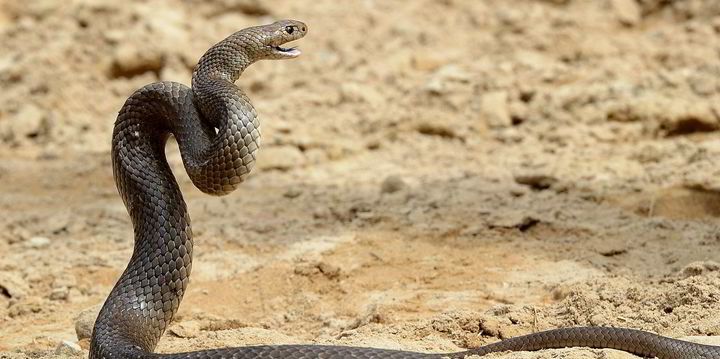Santos desert crews tackle hazards of heat, rough terrain and ...

Working at Santos’ Moomba project located in the remote Strzelecki Desert about 800 kilometres north of the South Australia state capital Adelaide brings its own rewards — and some unusual challenges.
Alongside fringe benefits such as stunning sunsets, there are fierce summer temperatures, uncompromising terrain and close encounters with the native wildlife, some of which should definitely be approached with caution.
Kangaroos, lizards and cockatoos are not infrequent visitors to the project site, and workers sitting outside their onsite accommodations, known as “cribs”, have reported seeing dingoes at close quarters in the early evening, Santos Energy Solutions president Brett Wood tells Upstream.
However, it is venomous vipers such as the eastern brown snake that could cause the most harm to the company’s employees and contractors at Moomba — eastern browns are responsible for the majority of snakebite deaths in Australia, reportedly accounting for up to 65% of such fatalities between 2000 and 2016.
Santos employs a fauna expert during construction work and when pipelines are being laid, to ensure the safety of wildlife species and their habitat that potentially could be impacted, as well as the safety of workers at the Moomba facility.
But venomous snakes take no notice of dates and times, and the operator also has its own snake wranglers — employees who, perhaps surprisingly, did not draw the short straw but actually volunteered to be trained for the role.
“We have more applications [to be trained as snake wranglers] than there are positions,” Woods says.
Those on the ground also need to be trained in how to deal with the extreme weather that Moomba experiences during the southern hemisphere summer from October to April, when peak temperatures can well exceed 40 degrees Celsius.
Other specialised training is required for all employees who drive vehicles at the Moomba asset — four-wheel drive training is needed because of the terrain.
Some 60 workers typically live on site at Moomba during normal operations, working two 12-hour shifts — respectively starting at 6am and 6pm — on typical fly-in, fly-out rosters of two weeks on and two weeks off.
However, during the construction phase for the Moomba carbon capture and storage project this number has increased to about 600.
Such is the remoteness, not to mention security and safety concerns, that there are no scheduled flights to Moomba and access to the facility is restricted to Santos employees, its contractors and invited visitors.


























